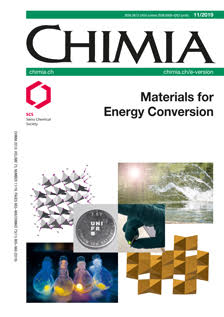Photoelectrochemical Cells Based on Dye Sensitization for Electricity and Fuel Production
DOI:
https://doi.org/10.2533/chimia.2019.894PMID:
31753070Keywords:
Dye-sensitized, Mesoporous, Nanostructured, Photoelectrochemistry, Solar cellAbstract
Dye-sensitized semiconductor oxide photoelectrodes in which light is absorbed by a monomolecular layer of dye chemisorbed on a porous oxide substrate have attracted considerable interest in the last 35 years, mainly for the conversion of sunlight to electricity, in dye-sensitized solar cells (DSSCs) with maximal efficiencies in the range 10–15%, and, most recently, as dye-sensitized photoelectrochemical cells (DSPECs) for the generation of solar fuels. In the latter direction, considerable progress has been achieved but the efficiency is notably lower than for electricity generation. In the present review, the basic physicochemical principles of the DSSC and DSPEC operation are described, several keynote results reported, and the factors limiting the performance and necessitating further research highlighted.Downloads
Published
2019-11-01
Issue
Section
Scientific Articles
License
Copyright (c) 2019 Swiss Chemical Society

This work is licensed under a Creative Commons Attribution-NonCommercial 4.0 International License.
How to Cite
[1]
N. Vlachopoulos, A. Hagfeldt, Chimia 2019, 73, 894, DOI: 10.2533/chimia.2019.894.







